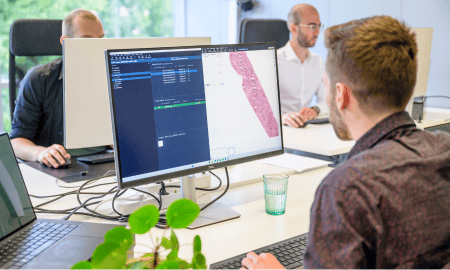Throughout history, pathology has remained an integral component of medicine, tracing its origins to ancient healers recognizing the importance of understanding disease processes for effective treatments. What began as speculative observations has since evolved into a complex specialty characterized by precise assessments, predictive diagnosis, and advanced imaging modalities. This transformation has been driven by technological advances that have revolutionized this field time and time again.
Early days of pathology: Speculations and autopsies
Ancient healers understood how important it is to map the disease’s development, describe the abnormal structures found in patients, and look for similarities in prevalent conditions. However, due to their constraints and lack of expertise, this was mostly limited to empirical assessments that often have a speculative nature. One of the first medical documents that can be traced back to the beginnings of pathology is the Edwin Smith Papyrus, which dates back to the 17th century BC and is written entirely in hieroglyphs [1]. It depicted skin ulcerations in patients; however, it was impossible to draw any causal relationships or map the development of the condition.
Hippocrates, often recognized as the father of medicine, was the first physician to propose the underlying mechanisms behind medical conditions in the form of the Humoral Theory [1]. In the 4th century BC, he theorized that humans consist of four vital fluids: blood, phlegm, yellow bile, and black bile. Hippocrates believed that once there was a significant excess or deficiency of any of those, the individual would fall ill. This theory was prevalent until it was disproved in the 17th century.
The Middle Ages brought the next major developments, as, although illegal, former physicians and healers performed autopsies and disseminations to better understand the nature of different conditions and the drivers behind them. Antonio Beniveni (1443‐1502) developed ‘De abditis Nonnullis ac Mirandis Morborum et Sanationum Causius’ [1], the first publication in which pathology findings appear separately and in a systematic way, with over 100 descriptions of cases he encountered during his research. This is often referred to as the time when pathology became a specialty on its own rather than just a part of medicine. Throughout the Middle Ages and Renaissance, physicians were systematically describing new cases and publishing their findings and theories, slowly straying away from Hippocrates’ Humoral Theory.
Beginnings of modern pathology: Microscopy and cellular basis of diseases
The first technological advance that elevated the field of pathology to a new level was the invention of microscopes. Zacharias Janssen invented the first microscope in 1590, and then Robert Hooke made it available in compact form in 1655 [1]. However, it took over 200 years for microscopes to become popular for studying diseases and their underlying causes [2]. That’s when Rudolf Virchow, known as the “father of modern pathology”, used a microscope for tissue analysis. He presented his studies and proposed that diseases have a cellular basis, creating the Cell Theory in the 19th century [3]. Virchow, along with his students, was the first to propose that cellular growth is at the foundation of all living creatures.
Throughout the rest of the 19th century, microscopy underwent significant developments, evolving from the assessment of freshly sliced, unstained tissues to a more complex process involving embeddings, fixations, and the development of dyes for different tissue types. Many of those have remained the basis for current microscopy.
Holistic view in pathology: Implementation of immunology, biochemistry, and molecular biology
The beginning of the 20th century brought a new understanding of pathology as we knew it. While microscopy remained the main source of new discoveries, scientists started to acknowledge the importance of other fields in understanding diseases. There were massive developments in fields such as immunology, chemistry, and molecular biology that subsequently changed pathology.
One of the more vital developments was the discovery of antibodies. This laid the foundations for immunohistochemistry and allowed pathologists to identify specific proteins in situ, giving them a better understanding of disease development [1] . It paved the way for pathologists to provide a more accurate prognosis and identify therapeutic targets.
Secondly, in 1993, Kary Mullis invented the polymerase chain reaction (PCR) method, driving a massive shift in all medicine and science-related fields. It enabled scientists to amplify the genetic material and assess the structures and changes, even in small samples [12]. From the year 2000 onwards, pathology has taken on a new direction as it has become possible to assess single cells or cell fragments and look for any signs of abnormality to diagnose the conditions or give an accurate prognosis.
New standards in pathology: The use of novel technologies
Digital Pathology
One of the big revolutions in pathology has come with the integration of digital solutions. Whole-Slide Imaging (WSI) involves scanning glass slides to produce their digital copies [4]. The first commercial WSI slide scanner was developed by James Baccus in 1994 [5]. It cost $300,000 and took approximately 24 hours to scan a single slide. Nowadays, scanning a 10×10 mm2 area in 20X takes, on average, 3.6 minutes, depending on the scanner [6].
Digital pathology has been a significant driver in the development of the discipline. It has drastically changed the field of pathology through the introduction of digital workflows, which enable highly efficient teleconsultations and digital diagnosis [7]. This transformation has also paved the way for the integration of artificial intelligence (AI) solutions . Additionally, WSI has allowed specialists to easily store archives of previous slides that can be linked to a patient’s history, thereby improving the record-keeping of previous conditions and serving as a basis for training and educating new experts.
Implementation and integration of AI solutions
Nowadays, pathologists leverage the knowledge gained throughout the centuries, together with innovative technologies such as WSI and AI, to bring the fields of diagnosis, prognosis, and treatment optimization to whole new levels. With the integration of novel deep learning solutions, pathologists can be supported in their assessments, resulting in faster, cheaper, and more precise results [8].
Artificial intelligence algorithms build on the foundations that WSI laid down. Deep learning solutions can automatically assess, review, and annotate the WSI slides, improving workflow and turnaround times [9]. The big breakthrough came in 2019 with the first European IVD approval of AI-based software for the detection of prostate cancer [10], shortly followed by FDA approval of the same technology [11]. Since then, AI has improved even further, and it can provide services such as automated quality control, segmentation of relevant tissues, or quantification of abnormalities.
AI-aided pathological evaluations do not have to rely on the observer’s experience, subjective interpretation, or crude semi-quantitative assessments but can rather provide reproducible and precise measurements [8]. This semi-automation allows for easier large-scale data processing in both clinical and research settings [13]. Not only does this technology bring benefits to patients, but it can also enable exponential growth in new discoveries in pathology. With increased speed and precision, researchers shift their focus from manual and monotonic assessments to the analysis of challenging cases or novel tissue structures and causes lying behind them.
By embracing these technological advances, pathology is transforming from a discipline rooted in observation to one characterized by precision and predictive possibilities. As technology continues to advance, the future holds even greater potential for enhancing our understanding of disease pathology and improving patients’ outcomes.
Aiosyn’s AI-powered pathology solutions
As a part of this revolution, Aiosyn has introduced various solutions aimed to improve diagnoses and faster discoveries. We offer products such as AiosynQC to make sure only high-quality slides are being reviewed, Aiosyn Mitosis Breast, which increases the reproducibility and efficiency of mitotic figure assessments, and our kidney image analysis services through the NephroPath platform, which offers kidney structure segmentation, quantification, and treatment response grouping, among other things. With these innovative applications and services, Aiosyn is committed to pushing the boundaries of what is possible in pathology.
Sources:
- Silva, L.F.F. da, Saldiva, P.H.N. and Alves, V.A.F. (2016). History and prospects of Pathology in Medicine. Revista de Medicina, 95(spe2), p.68. doi:https://doi.org/10.11606/issn.1679-9836.v95ispe2p68-72.
- van den Tweel JG, Taylor CR. A brief history of pathology: Preface to a forthcoming series that highlights milestones in the evolution of pathology as a discipline. Virchows Arch. 2010 Jul;457(1):3-10. doi: 10.1007/s00428-010-0934-4. Epub 2010 May 25. PMID: 20499087; PMCID: PMC2895866.
- Ribatti D. Rudolf Virchow, the founder of cellular pathology. Romanian Journal of Morphology and Embryology = Revue Roumaine de Morphologie et Embryologie. 2019 ;60(4):1381-1382. PMID: 32239122.
- Pantanowitz L, Sharma A, Carter AB, Kurc T, Sussman A, Saltz J. Twenty Years of Digital Pathology: An Overview of the Road Travelled, What is on the Horizon, and the Emergence of Vendor-Neutral Archives. J Pathol Inform. 2018 Nov 21;9:40. doi: 10.4103/jpi.jpi_69_18. PMID: 30607307; PMCID: PMC6289005.
- Bacus, James V. (Downers Grove, IL), Bacus, James W. (Oakbrook, IL) 2000 Method and apparatus for acquiring and reconstructing magnified specimen images from a computer-controlled microscope United States Bacus Research Laboratories, Inc. (Elmhurst, IL) 6101265 https://www.freepatentsonline.com/6101265.html
- Garcia-Rojo, Marcial & Bueno, Gloria & Mateos, Carlos & García, Jesús & Vicente, Manuel. (2006). Critical Comparison of 31 Commercially Available Digital Slide Systems in Pathology. International journal of surgical pathology. 14. 285-305. 10.1177/1066896906292274.
- Kumar N, Gupta R, Gupta S. Whole Slide Imaging (WSI) in Pathology: Current Perspectives and Future Directions. J Digit Imaging. 2020 Aug;33(4):1034-1040. doi: 10.1007/s10278-020-00351-z. PMID: 32468487; PMCID: PMC7522141.
- Soliman A, Li Z, Parwani AV. Artificial intelligence’s impact on breast cancer pathology: a literature review. Diagn Pathol. 2024 Feb 22;19(1):38. doi: 10.1186/s13000-024-01453-w. PMID: 38388367; PMCID: PMC10882736.
- Silva, L.F.F. da, Saldiva, P.H.N. and Alves, V.A.F. (2016). History and prospects of Pathology in Medicine. Revista de Medicina, 95(spe2), p.68. doi:https://doi.org/10.11606/issn.1679-9836.v95ispe2p68-72.
- Paige (2019). Paige announces first ever CE Mark for Deep Learning in Pathology. [online] www.prnewswire.com. Available at: https://www.prnewswire.com/news-releases/paige-announces-first-ever-ce-mark-for-deep-learning-in-pathology-300956164.html [Accessed 1 May 2024].
- da Silva, L.M., Pereira, E.M., Salles, P.G., Godrich, R., Ceballos, R., Kunz, J.D., Casson, A., Viret, J., Chandarlapaty, S., Ferreira, C.G., Ferrari, B., Rothrock, B., Raciti, P., Reuter, V., Dogdas, B., DeMuth, G., Sue, J., Kanan, C., Grady, L. and Fuchs, T.J. (2021). Independent real-world application of a clinical-grade automated prostate cancer detection system. The Journal of Pathology, [online] 254(2), pp.147–158. doi:https://doi.org/10.1002/path.5662.
- Kaunitz JD. The Discovery of PCR: ProCuRement of Divine Power. Dig Dis Sci. 2015 Aug;60(8):2230-1. doi: 10.1007/s10620-015-3747-0. PMID: 26077976; PMCID: PMC4501591.
- Ayorinde, John O.O.; Citterio, Federica; Landrò, Matteo; Peruzzo, Elia; Islam, Tuba; Tilley, Simon; Taylor, Geoffrey; Bardsley, Victoria; Liò, Pietro; Samoshkin, Alex; Pettigrew, Gavin J.. Artificial Intelligence You Can Trust: What Matters Beyond Performance When Applying Artificial Intelligence to Renal Histopathology?. JASN 33(12):p 2133-2140, December 2022. | DOI: 10.1681/ASN.2022010069
More Blogs
-
AI assistance in Chronic Kidney Disease monitoring
03 July, 2024 • By Kama Witkowska
Read more -
Behind the scenes of pathology AI innovation – Blazej Dolicki’s insights into training, validation, deployment, and beyond
18 June, 2024 • By Victoria Grosu
Read more -
The benefits of AI implementation in mitotic figure counting
11 April, 2024 • By Kama Witkowska
Read more -
Diana Rosentul explains the complexities of regulatory compliance for integrating AI-based solutions in the healthcare industry
25 January, 2024 • By Diana Rosentul
Read more -
Cristina González Gonzalo discusses her journey with the clinical validation of Aiosyn Mitosis Breast
14 December, 2023 • By Anna Correas Grifoll
Read more -
Time to go digital? Navigating the pathology transition from microscopes to whole slide images
30 November, 2023 • By Victoria Grosu
Read more -
Prepare for the future: AI is changing the landscape of pathology
09 October, 2023 • By Victoria Grosu
Read more -
How automated quality control of whole slide images can increase the efficiency of clinical and research pathology workflows
25 July, 2023 • By Victoria Grosu
Read more











